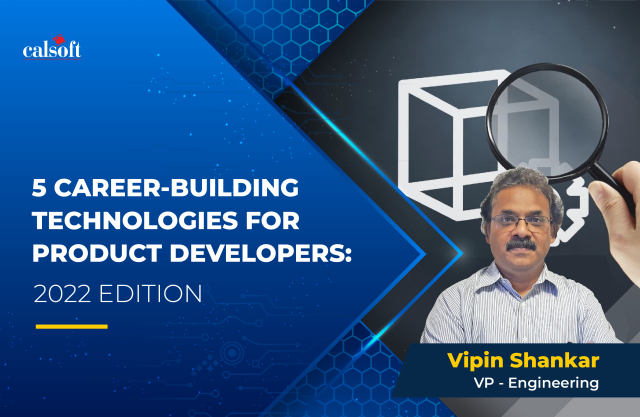Product developers can look forward to 2022 being an amazing year for them. With the demand for new and helpful technologies on the rise, there are ample opportunities in new and emerging fields. If you’re a developer wondering which area would be the best to jump into this year, here are some of the fields with the most potential.
Machine Learning
Machine learning is one of the fastest-growing branches of AI. If you have a passion for computer science and a desire to create a career in a fast-moving and action-packed industry, this is it.
Many companies have found value in machine learning. Netflix saved $1 billion using a machine learning algorithm that crafted personalized content recommendations. The accuracy of machine learning in predicting the stock market’s highs and lows is 62%. Google Translate learned that errors were reduced by 60% when changing to GNMT, a translation algorithm powered by machine learning. That aside, multiple existing enterprise mainstays, including datacentre products, will look to build in ML elements into their core functionality.
Due to the combination of these factors, ML engineers are expected to be in high demand. The job includes using big data to create complicated algorithms to program machines like cars or voice assistants. Performing tasks like a human, economic forecasting, recognizing images, natural language processing – these are the kinds of tasks being implemented. Machine learning is also learning to improve processes automatically, without the need for human interference. To work in this field, you’ll need a background in AI or computer science.
Robotics Engineer
Another exciting field is that of robotics engineering. This area is growing, and has found great demand in many fields, such as manufacturing and technology. It is also gaining popularity in start-up companies and Fortune 500 entities alike. Engineers must engage in analysis, evaluation, configuring, testing, and maintenance of these prototypes, robotic components, integrated software and machines, and more. This is a highly technical job and requires a thorough grounding in logic. Software engineers who understand how data works and can be leveraged to drive actions in the real world could look to make the jump too.
There is going to be a great demand for these engineers in more industries over time. One major example is healthcare. There will be many new ways in which modern technologies will help societies and businesses function. To work in this field, you’ll need a degree in robotics or computer science.
Cloud Engineer
Over the past few months, cloud computing has become a must-have for those who are working remotely. Organizations have been hiring those with the required skills and knowledge. These individuals must migrate processes, implement the needed infrastructure, and perform cloud-related tasks. Many legacy products are looking to turn cloud-native, and the product developers who understand how to move these products to the cloud will be in high demand.
These engineers are often titled under various roles, including solution architects, cloud developers, sysops engineers, and more. These roles and responsibilities differ from company to company, but the overall role of a cloud engineer is to plan out and monitor a product’s evolution.
This field has many responsibilities, including a working knowledge of Google Cloud, Slack, AWS, and more. You should also have experience or education in computing, data management, robotics, adaptive computation, machine learning, and human-computer interaction.
UX Designer
Today, technology must have an iron-clad focus on the customer’s experience. A study has shown that 88% of online shoppers don’t return to a website after having a bad user experience. The story is no different when you look at enterprise product usage and adoption.
This implies that even if a piece of technology is ground-breaking and extremely helpful, it’s pointless if it’s too badly-designed to use.
That’s where UX designers come in. They ensure that the technology is wrapped in an easy-to-use, attractive, and intuitive manner.
These designers are concerned with designs that are ‘behind the scenes’. They ensure that software, websites, or apps can meet the customer’s habits, motivations, needs, and behaviors. An increasing number of businesses are turning to digital platforms to promote and sell their services and products. What’s needed here is a relevant undergraduate degree in a field such as computer science, or a post-graduate degree in the same. Props if you have sufficient professional experience, too.
Data Scientist
The professional world is increasingly shifting to being run by data. Most products are becoming data products, too. That aside, enterprise processes, manufacturing activities, and compliance and reporting are all being driven by data. Data-driven processes are extremely valuable and will lead companies in the future. Perhaps that’s why this role is being called ‘The Sexiest Job of the 21st Century‘.
Now, these jobs aren’t new. But businesses and organizations are collecting an increasing amount of data every day, which has led to a demand for data scientists who can make sense out of these mountains of data. This rings true for several industries, including IT, entertainment, manufacturing, healthcare, and more.
Data scientists are usually tasked with the responsibility of testing and optimizing various applications. To do this, you must have a strong understanding of data science and analytics. A postgrad degree in computational and applied math, e-science, or data science would give you an added advantage.
These are the hottest areas in technology that you could venture into in 2022. Test your skills with challenging projects and make the most out of these opportunities presenting themselves in front of you. As it happens, we have openings in most of these areas too. Join us at the forefront of tech!







